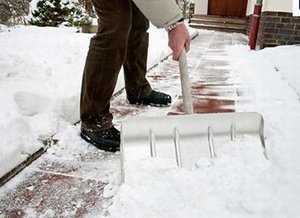
The salt we use around our home in the winter to melt ice and snow can damage our lakes and rivers harming fish, insects, plants and all the other organisms that live in these water bodies.
To reduce your impacts this winter consider:
· Removing as much snow and ice from your driveway and walkways as possible before applying de-icer is one of the best actions you can take. Salt and other de-icers work best when there is only a thin layer of ice and snow to melt. Be careful however as shovelling heavy snow and over-exerting yourself can lead to a heart attack.
· Reducing the amount of salt you apply. If there is salt on your driveway after the snow and ice melts this is a sign that too much salt has been applied.
· Applying de-icer before snow falls to reduce the amount needed.
· Urea-based fertilizers are often recommended as an alternative de-icer; however, these contain nitrogen and when washed down driveways and storm sewers can cause harm to fish and other aquatic organisms.
· Sand or other grit such as fine gravel is a good alternative to chemical de-icers. Use sparingly however, as excess sand can clog storm drains and accumulate in streams.
· On dry days sweep up any excess salt and de-icer to prevent it from entering water bodies.
· On extremely cold days (below -20° C) there is no point of applying salt as it will be too cold for it to work. At this temperature sand or grit is your best option.
· There are a lot of products claiming to be eco-friendly. The best advice is to read the labels and research the ingredients used in the product.




